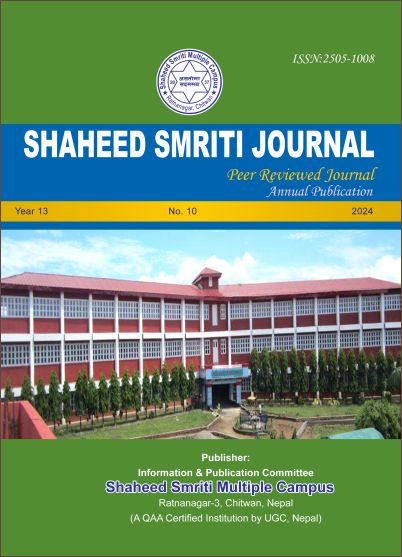Comparative Analysis of Arsenic Concentration in Tube Well and Deep Boring Water in Ratnanagar
DOI:
https://doi.org/10.3126/shaheedsmriti.v13i10.76818Keywords:
Arsenic, UV-visible spectrophotometry, groundwater, deep boring water, Ratnanagar Municipality, tube wellsAbstract
Arsenic contamination in groundwater poses significant health risks. This study investigates arsenic levels in tube wells and deep boring water in Wards 1, 6, and 10 of Ratnanagar Municipality, Nepal, using UV-visible spectrophotometry. The results revealed varying arsenic concentrations, with tube wells in Ward 10 exhibiting higher levels compared to Wards 1 and 6. Deep boring water in Ward 6 showed the highest concentration among the studied ward. Although all the measured concentrations are below the national limit of 50 µg/L (50 parts per billion) adopted by Nepal, India, and Bangladesh, they still exceed the stricter safety limit of 10 µg/L (10 parts per billion) set by the World Health Organization (WHO) for drinking water. These findings highlight the importance of regular monitoring and taking precautions to reduce potential long-term health risks.




